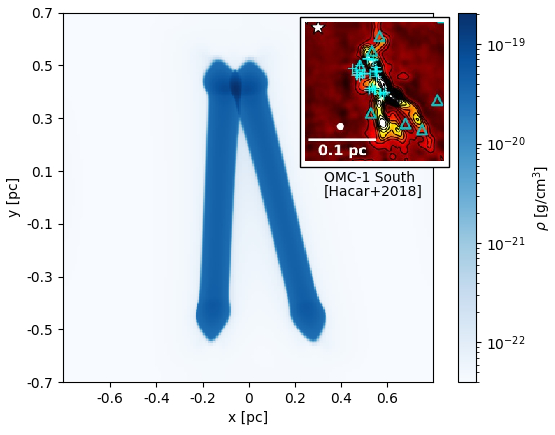| EPoS Contribution |
|
Merging filaments: The origin of the "tuning-fork" structure
Elena Hoemann LMU, Munich, DE | |
| Observations of filaments in high density star-forming regions, e.g. Orion, often show characteristic complex structures such as a fork-like split-up. This morphology may indicate filaments which are in the process of merging, a process which constitutes a problem of competing timescales as the time to gravitationally merge has to be shorter than the timescale of collapse along the filament axis. In order to explore the validity of filament mergers, we execute hydrodynamic simulations with the adaptive-mesh-refinement code RAMSES. We present a parameter study which investigates the dependence on the significant physical quantities and their influence on the result of the merger and whether the collapse along the filament axis prevents it. Finally, we show that our analytic model is in good agreement with the simulations and can accurately describe the merging process between filaments. | |
 | |
| Caption: Density projection of simulated merging filaments which recreate the "tuning-fork" structure observed, for example, with ALMA in the Orion Integral Filament as shown in the small figure taken from Hacar+2018. | |
| Collaborators: A. Burkert, LMU/MPE, DE S. Heigl, LMU, DE |
Suggested Session:
Cores |

